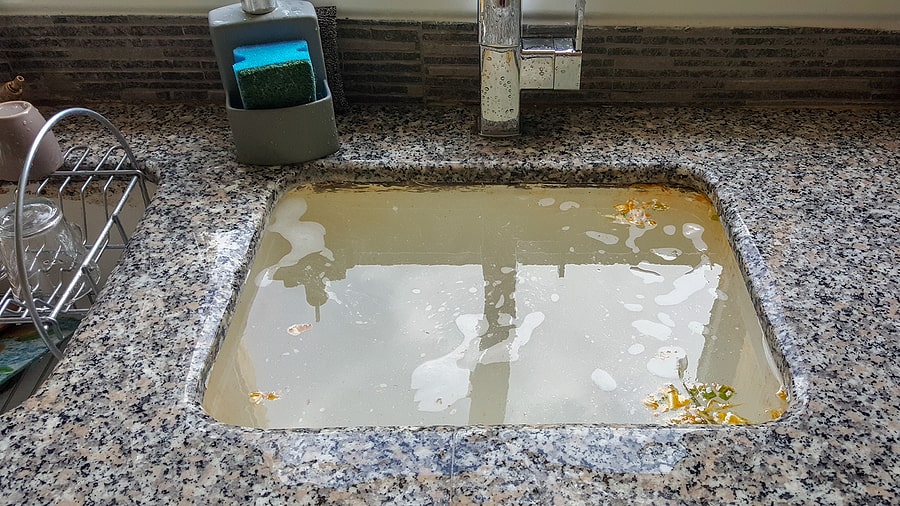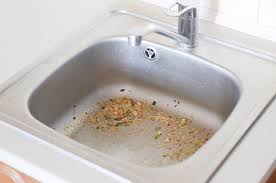This article listed below about Do It Yourself Plumbing Solutions is especially informative. Don't overlook it.

In this short article, we will be taking a look at 5 basic actions you could take to free your kitchen area sink from obstructions and save you from the pain and also shame of dealing with a clogged kitchen sink.
Clogged cooking area sinks are just one of the most common drainage problems property owners face. And what's even more, it's a undesirable as well as very uncomfortable view. Think of going to the sink to do your dishes and also figuring out that the drainpipe is blocked and also water can not stream down quickly.
A lot of stopped up drains are triggered by food debris, soap, oil, as well as fat particles. They obstruct the sink and make it hard for water to decrease the drain rapidly. While it is alluring to put a call through to the plumbing technicians, there are a couple of DIY hacks you can try initially prior to making that phone call.
1. Sodium Bicarbonate and Vinegar
In contrast to using any kind of form of chemicals or bleach, this technique is more secure and not damaging to you or your sink. Baking soda as well as vinegar are everyday home things used for many other things, as well as they can do the technique to your cooking area sink.
Firstly, get rid of any kind of water that is left in the sink with a cup.
Then put a great amount of baking soda down the drain.
Pour in one mug of vinegar.
Seal the drain opening as well as permit it to opt for some mins.
Pour warm water away to melt away various other stubborn residue as well as fragments.
Following this straightforward approach can suffice, and you can have your kitchen sink back. Repeat the procedure as high as you consider necessary to rid the sink of this debris completely.
2. Try a Plunger
You can try using a plunger if the problem is not from the waste disposal. Bettors are typical home devices for this occasion, as well as they can come in helpful if you utilize them effectively. A flat-bottomed plunger is most suitable for this, yet you can make do with what you have is a bathroom bettor.
Comply with the following easy steps to use the bettor properly:
Secure the drain with a cloth and fill up the sink with some warm water
Place the plunger ready over the drainpipe and begin diving
Check to see if the water runs easily after a few dives
Repeat the process up until the drainage is totally free
3. Maybe it's the Garbage Disposal
In many situations, the blockage might be due to a clog in the disposal. Use pliers rather.
You can check out the following option to unclog your cooking area sink if this does not work.
4. Make use of a Hanger
This trick is efficient and ingenious, specifically if you know and also maybe see what's creating the clog. Occasionally, the clog could be brought on by hair, jewelry, or substantial portions of food bits. If you have one can do the trick, making use of a cord fabric wall mount or a plumber's snake. All you need do is correct the wall mount to drop the drainpipe while you thoroughly select the fragments creating the blockage.
Run warm water down the drain hereafter to see exactly how effective you were.
5. Use Boiling Water
When faced with a clogged sink, the first thing you ought to try is to pour boiling thin down the drain. That is about the most uncomplicated treatment to blocked sinks as well as drains. Boiling water assists counteract the bits as well as debris creating the clog, especially if it's oil, grease, or soap particles, and also in most cases, it can flush it all down, as well as your sink will be back to typical.
Since warm water could melt the lines and also create even more damage, do not try this method if you have plastic pipelines (PVC). If you utilize plastic pipes, you might intend to adhere to using a bettor to get particles out.
Utilizing this method, activate the tap to see just how water flows after pouring warm water down the tubes. If the blockage persists, attempt the process again. Nevertheless, the blockage could be much more persistent in many cases as well as require more than just boiling water.
Final Words
Trying these few techniques could save you the expenses of having a plumber inspect it. In several cases, a plumber is what we need. In cases where you discover it hard to unblock the sink even after attempting all these methods, it might be time to leave it to the professionals.
Call expert plumbing companies to fix your drain troubles as well as various other various household plumbing demands.
Clogged kitchen sinks are one of the most typical water drainage issues home owners encounter. Envision going to the sink to do your recipes and locating out that the drainpipe is blocked and water can not move down easily.
They block the sink as well as make it hard for water to go down the drain swiftly. When encountered with a clogged sink, the initial thing you ought to attempt is to put boiling water down the drain. Boiling water assists counteract the particles and also particles creating the obstruction, especially if it's soap, oil, or grease bits, and also in numerous cases, it can purge it all down, and also your sink will be back to normal.
How to Unclog a Kitchen Sink
Take the Plunge
Start your efforts by plunging. Use a plunger with a large rubber bell and a sturdy handle. Before getting to work on the drain, clamp the drain line to the dishwasher. If you don t close the line, plunging could force dirty water into the dishwasher.
Fill the sink with several inches of water. This ensures a good seal over the drain.
If you have a double sink, plug the other drain with a wet rag or strainer.
Insert the plunger at an angle, making sure water, not air, fills the bell.
Plunge forcefully several times. Pop off the plunger.
Repeat plunging and popping several times until the water drains.
Clean the Trap
The P-trap is the curved pipe under the sink. The trap arm is the straight pipe that attaches to the P-trap and runs to the drain stub-out on the wall. Grease and debris can block this section of pipe. Here s how to unclog a kitchen sink by cleaning out the trap:
Remove as much standing water from the sink as possible.
Place a bucket under the pipe to catch the water as it drains.
Unscrew the slip nuts at both ends of the P-trap. Use slip-joint pliers and work carefully to avoid damaging the pipes or fasteners.
If you find a clog, remove it. Reassemble the trap.
If the P-trap isn t clogged, remove the trap arm and look for clogs there. Run the tip of a screwdriver into the drain stub-out to fetch nearby gunk.
Spin the Auger
With the trap disassembled, you re ready to crank the auger down the drain line.
Pull a 12-inch length of cable from the auger and tighten the setscrew.
Insert the auger into the drain line, easing it into the pipe.
Feed the cable into the line until you feel an obstruction. Pull out more cable if you need to.
If you come to a clog, crank and push the cable until you feel it break through. The cable will lose tension when this happens.
Crank counterclockwise to pull out the cable, catching the grime and debris with a rag as the cable retracts.

As a keen person who reads about Repairing Common Household Plumbing Issues, I think sharing that portion was essential. Those who enjoyed reading our blog posting if you please be sure to share it. Thanks for your time invested reading it.
Visit Url
 Yasmine Bleeth Then & Now!
Yasmine Bleeth Then & Now! Christina Ricci Then & Now!
Christina Ricci Then & Now! James Van Der Beek Then & Now!
James Van Der Beek Then & Now! Katey Sagal Then & Now!
Katey Sagal Then & Now! Stephen Hawking Then & Now!
Stephen Hawking Then & Now!